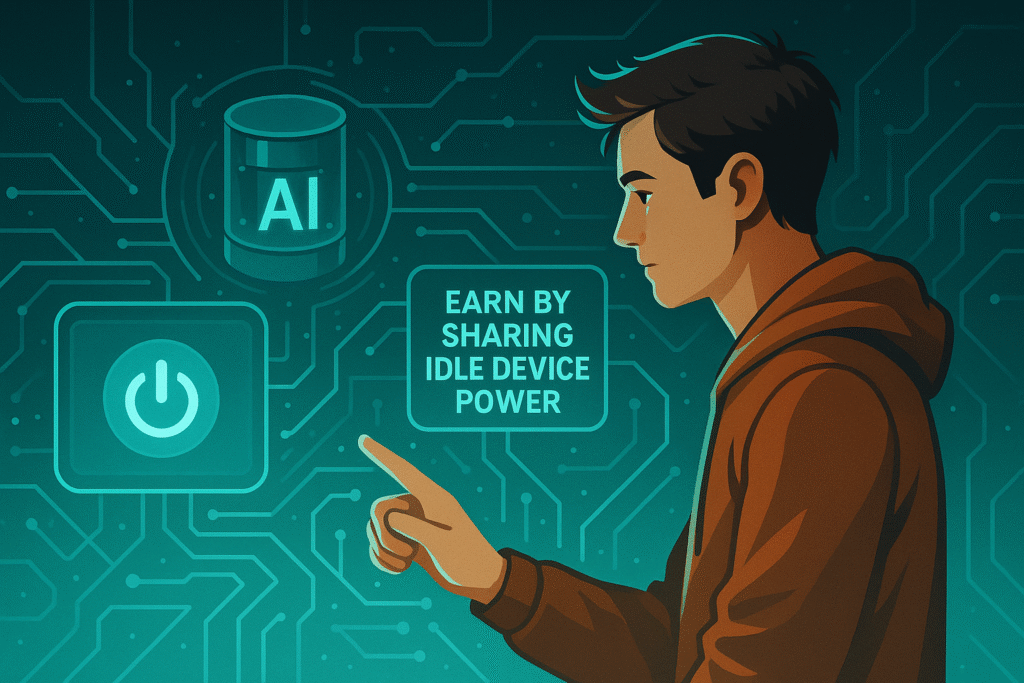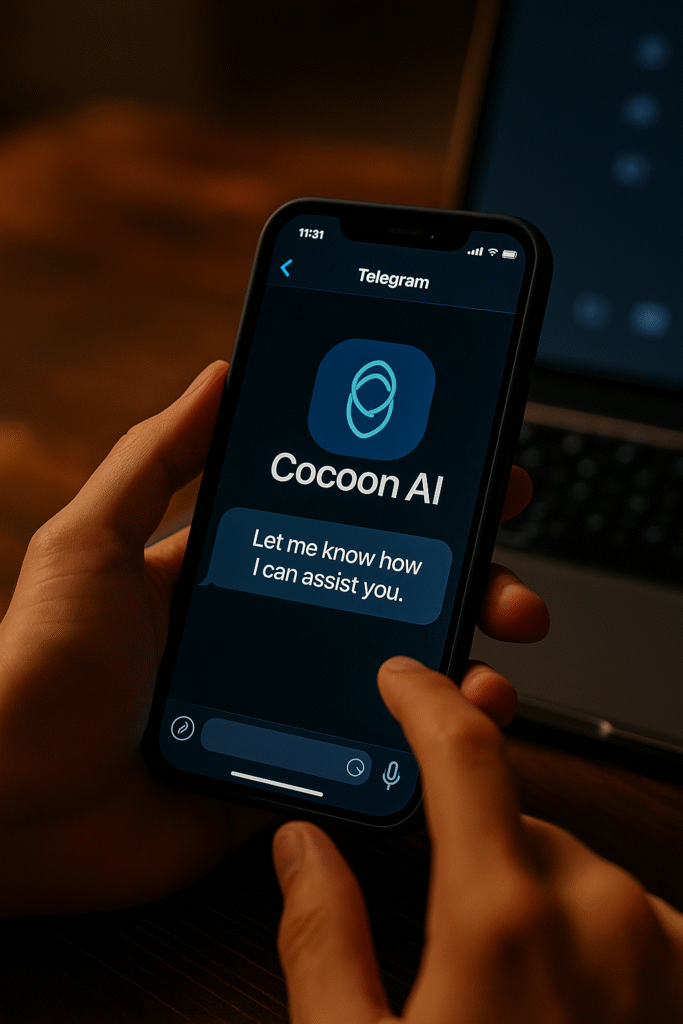Introduction: The Rise of Cocoon AI
Telegram has always been more than a chat app — it’s a movement. And now, with Cocoon AI, Telegram might just redefine how people earn from artificial intelligence.
Imagine this: instead of paying to use AI tools, you get paid for helping run them. That’s what Cocoon AI promises — a decentralized network where users contribute computing power and data to fuel private AI apps and, in return, earn real rewards.
In 2025, when privacy and ownership are everything, Cocoon AI is positioning itself as the “people’s AI network.” It’s Telegram’s answer to OpenAI and Google — but built on community, not corporations.
Before we jump into how you can earn, let’s first understand what makes Cocoon AI different.

1. You Earn by Sharing Idle Device Power
Think of Cocoon AI as a network that runs on your phone or PC when you’re not using it. Instead of mining crypto, you’re mining intelligence.
When you install Cocoon AI’s node software or use Telegram’s mini-app integration, it allows your idle CPU or GPU power to process encrypted AI computations. These can range from chatbot replies to image generation or small language tasks.
In return, you get paid in Cocoon Tokens (CCN) — the network’s native currency.
The more time your device contributes, the higher your rewards.
Unlike typical crypto mining, it doesn’t overheat your system or drain your battery, thanks to Telegram’s lightweight architecture.
In short: you become a micro data center for AI apps — without needing expensive hardware.
As noted on the OpenAI Blog, decentralized AI processing is expected to grow 40% by next year — and Cocoon is riding that trend first.
2. You Get Paid for Hosting Private AI Models
One of the biggest concerns people have with today’s AI? Privacy. Most models run on centralized servers owned by big companies. Cocoon AI flips that idea on its head.
It allows users to host encrypted AI models locally. When someone else runs a query that touches your hosted model, you earn a portion of the computation fee.
So instead of “data being the new oil,” your device becomes the refinery.
This concept is similar to what’s happening in open-source projects like Hugging Face, but Cocoon adds a real reward system to it.
You can choose what models to host — language bots, translation tools, or image generators. Telegram’s backend manages encryption, so no one (not even you) sees user data directly.
🔐 The best part? Your identity stays private, and your device becomes a secure node in a global AI mesh.
📎 For more about global AI ethics, check out NIST AI for ongoing standards that Cocoon is aligning with.

3. Telegram Bots Become Your Business Partners
If you’ve used Telegram bots, you know how powerful they can be — from crypto trades to chat automation.
Now, with Cocoon AI, bots get a serious upgrade.
Developers can build AI-powered bots that use Cocoon’s decentralized models — and every user who interacts with these bots generates token rewards for the bot owner and for those powering the computation behind the scenes.
That means even if you’re not a developer, you can earn passively by subscribing to bots that share earnings with participants (a popular model called “node-sharing rewards”).
Example:
- A Telegram bot that summarizes YouTube videos using Cocoon AI.
- Every query a user runs consumes network resources.
- The bot owner and supporting nodes share the earnings.
It’s like YouTube revenue sharing — but for AI activity.

4. You Can License Your Own AI Dataset
This is where Cocoon AI becomes really revolutionary.
It lets users monetize their data — safely and anonymously.
Every time a private AI app trains or fine-tunes a model, it needs datasets — lots of them. Instead of scraping the web, Cocoon AI lets users upload anonymized data (like text samples, photos, or audio snippets) to train models.
Each dataset upload is encrypted, verified, and tagged to your Telegram ID (privately).
When your data helps train a model, you earn rewards in Cocoon Tokens.
It’s the first AI ecosystem where you get paid for your data, not exploited for it.
As privacy standards like those under the EU AI Portal expand globally, this “data-for-reward” model could become the gold standard for AI ethics.

5. Build and Sell Private AI Apps on Telegram
Here’s the most exciting part — you don’t have to just run nodes or host models.
You can build and sell your own AI-powered apps directly inside Telegram using Cocoon’s SDK.
Think of it as an AI App Store, but built into your chat experience.
You could launch an AI writer, translator, or stock-predicting bot — all powered by Cocoon AI’s decentralized network.
Revenue splits are transparent:
- Developers earn per transaction.
- Node hosts earn for computation.
- Telegram takes a minimal cut for network security.
This means your idea doesn’t have to live in the App Store jungle anymore — it can live inside Telegram, where 800+ million users already hang out.
For comparison, similar agent-style monetization was seen in NEO — The AI That Fired Its Boss — but Cocoon’s approach gives ownership back to users, not platforms.

Final Thoughts: The Future of Earning with Cocoon AI
Cocoon AI isn’t just another crypto project or AI tool — it’s the start of a new creator economy inside Telegram.
Where people once scrolled for free, they’ll soon earn for powering the ecosystem.
You don’t need to code. You don’t need to invest big. You just need to participate — by sharing a bit of what your device already has.
2026 could be the year when Telegram transforms from a messaging app to a decentralized AI marketplace — where every chat, every click, and every idle CPU cycle creates value.
Cocoon AI isn’t promising quick riches; it’s promising ownership.
And that’s something the future of AI desperately needs.

Comments